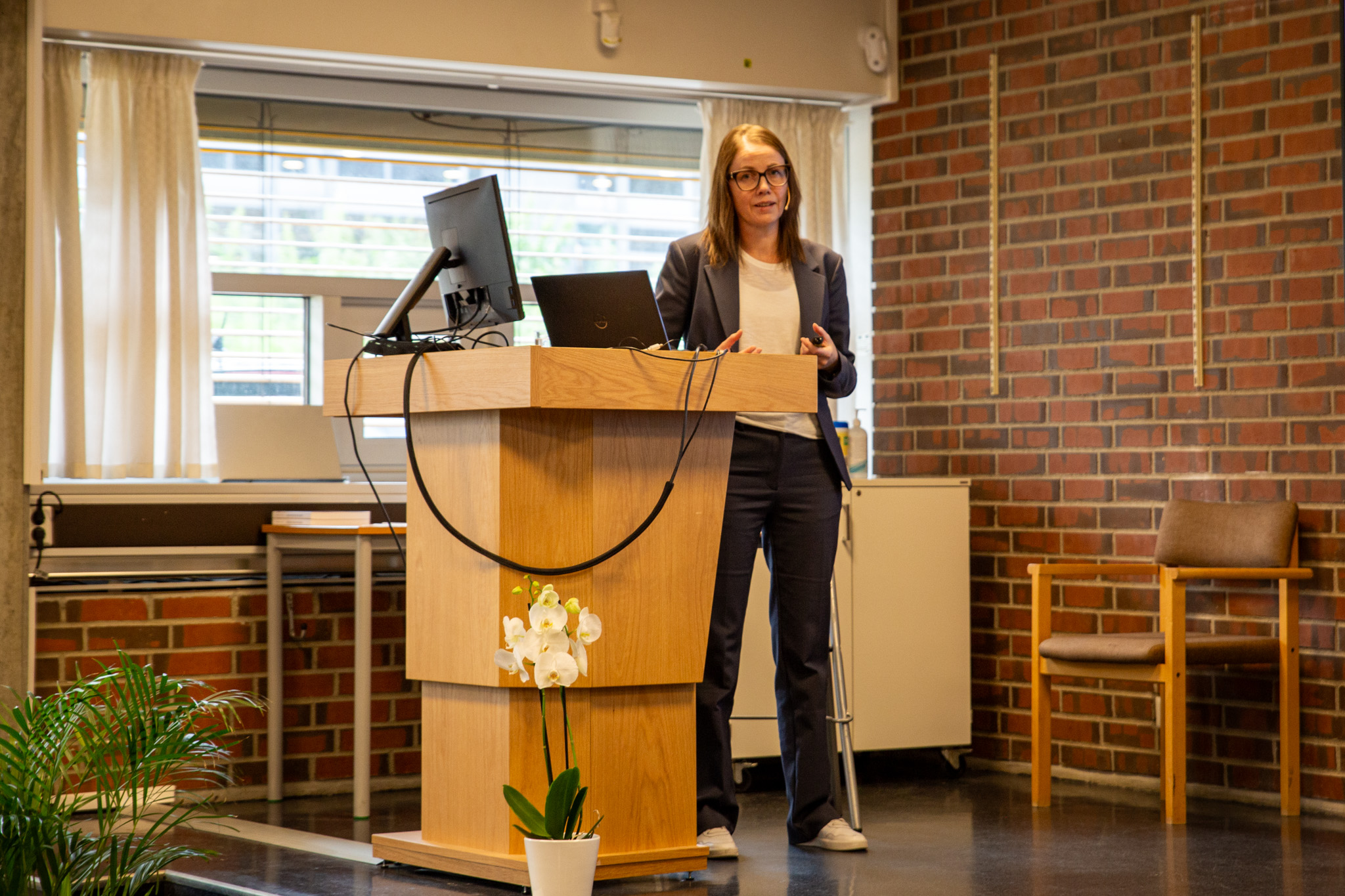Tine Vigdel Bredal has investigated different methods for analyzing chalk at core level and right down to the smallest scale, the nano level. She defended her doctorate 5 June.

"What is your professional background?"
"I have a master's degree in petroleum geology."
"What have you researched?"
"The doctoral work has been aimed at detailed analysis of chalk to identify mineralogical impurities at the core level and right down to the nano-scale (one nanometer is one billionth of one meter). Many methods were used, including HIM-SIMS (Helium Ion Microscopy – Secondary Ion Mass Spectrometry). This method has not been used for analysis of chalk before. The methods were used to map chemical, physical and mechanical processes when injecting different types of water and how the mineralogical impurities affect these processes. Experiments were carried out on both fabricated calcium and pure natural dolomite, as well as mixtures of both, in addition to natural core samples. The tests were carried out under high pressure and temperature which correspond to the conditions in reservoirs such as Ekofisk.
"What did you learn?"
"Mineralogical impurities are more widespread than more traditional methods estimate. This is because minerals from clay can cover the surface of the small constituents of chalk in the form of a coating that occurs in scattered areas. The distribution of mineralogy can affect various properties and processes of water injection into chalk. Minimal chemical reactions were observed in completely pure mineralogical environments when calcite and dolomite were flooded separately. The most interesting observation was that various mixtures of calcite and dolomite showed far more complicated chemical and in some cases mechanical processes , which in turn led to the dissolution of calcite and the precipitation of new minerals."
"What can the research be used for?"
"Natural chalk will always have impurities in it. These impurities can affect several conditions during oil production. In reservoirs such as Ekofisk, the impurities can affect processes such as increased dissolution of calcite. This can increase oil recovery. The dissolution can in turn affect geomechanical conditions, as well as the precipitation of new minerals. First and foremost, we can use the knowledge to increase the accuracy of modeling and simulation of oil production. The next step in this research may be to develop a "smart" water to control the processes in the most appropriate way possible."
Tine Vigdel Bredal defended her doctorate with the title How diagenetic rock composition and mineralogical changes associated with water injection affect geomechanics and fluid behaviour in chalk i.e. producibility (IOR) 5 June. The research has been carried out as a collaboration between the National IOR Centre of Norway and the University of Stavanger and is funded by the Research Council of Norway.